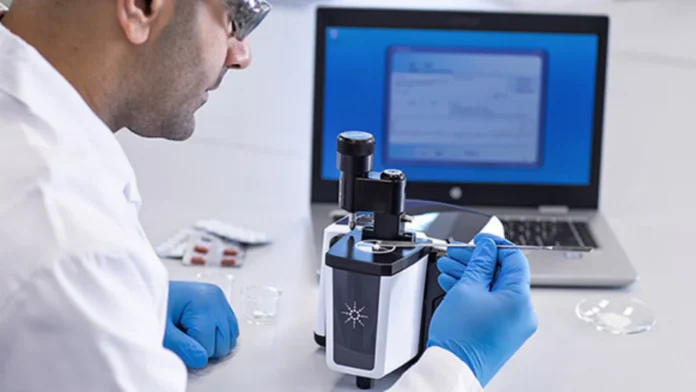A Fourier Transform Infrared (FTIR) Spectroscopy Instrument is designed to record information about a material placed in an IR beam. FTIR spectrometers are commonly utilized in petrochemical engineering, polymer science, organic synthesis, food evaluation, and the pharmaceutical industry. It is also used for detecting unstable substances in chromatography.
Overview of FTIR Spectroscopy
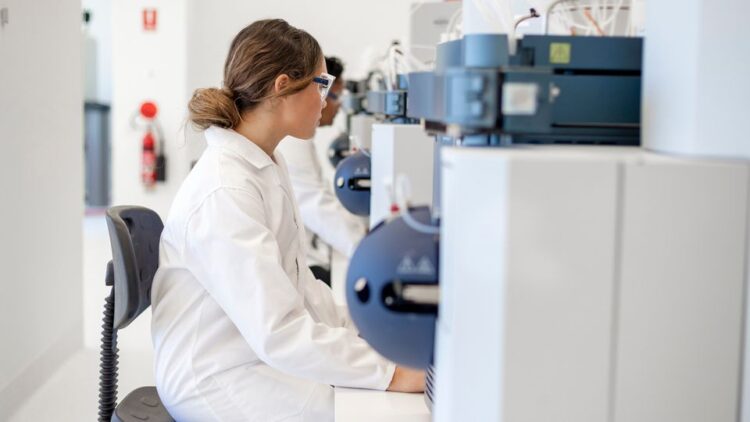
An FTIR spectrometer is the preferred method for infrared spectroscopy. These devices are one of the most popular analytical instruments in the scientific field. Developed in the mid-1940s, FTIRs were initially used to research organic compounds in the petrochemical field. An FTIR can be a single-purpose tool or a highly flexible research instrument.
Back in the day, original infrared instruments used dispersive technology. This approach separated individual energy frequencies emitted from the infrared source using a prism or grating. However, FTIR is now the preferred method over dispersive due to the following reasons:
- It is non-destructive
- It is a fast technique as it collects a scan every second
- It is a simple process as it only has one moving part
- It offers precision without the need for external calibration
- It has greater optical throughput
Aside from that, FTIR was designed to overcome the limitations of dispersive instruments. Because dispersive instruments measured infrared frequencies simultaneously, the scanning process was very slow. On the other hand, FTIR uses an optical device called an interferometer, which generates a unique signal with all the infrared frequencies.
Because of this, the time for scanning samples is greatly reduced to just a few seconds instead of several minutes.
How Does an FTIR Spectrometer Work?
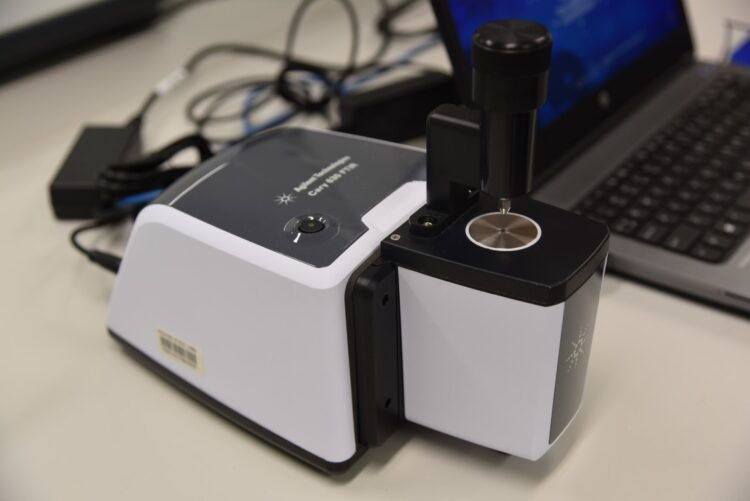
An FTIR uses an interferometer, a device invented by Albert Michelson during the 1890s. Interferometers consist of a source, beam splitter, two mirrors (moving and fixed), laser, and a detector. The energy passes through from the source to the beam splitter, which divides the beam into two parts. One part goes to the moving mirror, and the other to the fixed mirror.
Infrared spectroscopy is based on the principle that when infrared radiation passes through a sample, some radiation is absorbed, then recorded. Using the different structures of molecules with varying spectrums, the instrument can identify and distinguish different molecules. In such a way, they resemble the human fingerprint or DNA because they have unique characteristics.
Interferometers produce an optical signal which is then decoded using a mathematical technique called Fourier transformation. Once decoded, the computer-generated process then maps the spectral information. This is then searched against reference libraries for proper identification.
Agilent FTIR spectroscopy instruments have been around for a long time already. Today, it is usually the first step in material testing due to its sensitivity, simplicity, and speed. FTIR spectrometers are useful for the following:
- Detecting unknown materials in solid, liquid, or gaseous state
- Determine and quantifying surface contamination on a material
- Identifying whether there are additives in a polymer
FTIR spectrometers provide both qualitative and quantitative information from the same instrument. It is a robust and reliable technique used for identifying unknown samples. While it can be used for extracting quantitative information from an IR spectrum, in most instances, it is used in measuring the concentration of a substance in a sample.
The Use of FTIR In Various Industries
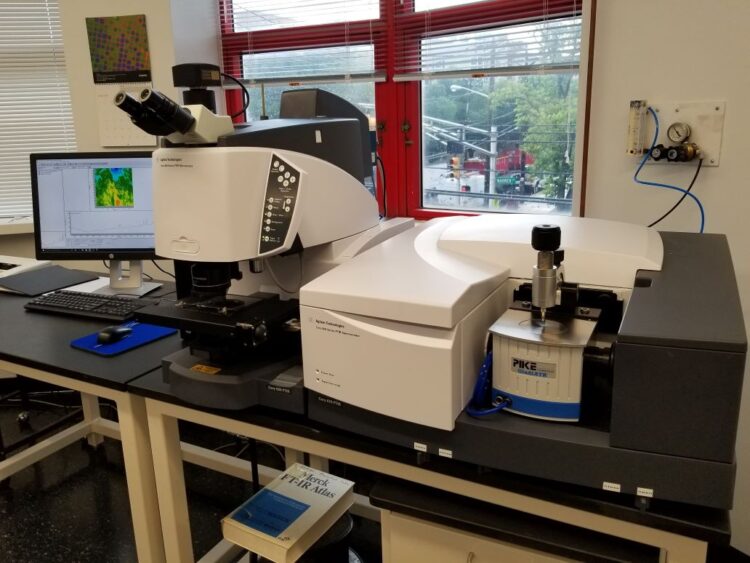
Aside from the abovementioned purposes, FTIR has been applied in various industries. In the pharmaceutical industry, FTIR is used for the following activities:
- Identification of contaminants
- Analysis of thin films and coatings
- Quality verification of materials
- Deformulation of rubbers, polymers, and other materials using thermogravimetric infrared (TGA-IR) and gas chromatography infrared (GC-IR) analysis.
In environmental studies, it is used for analyzing soil samples and monitoring air and water quality. In addition, it can help in addressing environmental and health issues related to increasing pollution levels. In the food industry, the use of FTIR has been useful in monitoring food’s physical, chemical, and rheological properties. Using ATR, one can check the trans-fat content of manufactured food products.
The forensic industry also benefits from the use of infrared technology. It helps detect illegal drugs, crime scene evidence, banned materials, and counterfeit goods. FTIR can also provide fast, easy, and consistent analysis for chemical evaluation, seized drugs, hit-and-run materials, and identifying textile materials.
Sampling Techniques
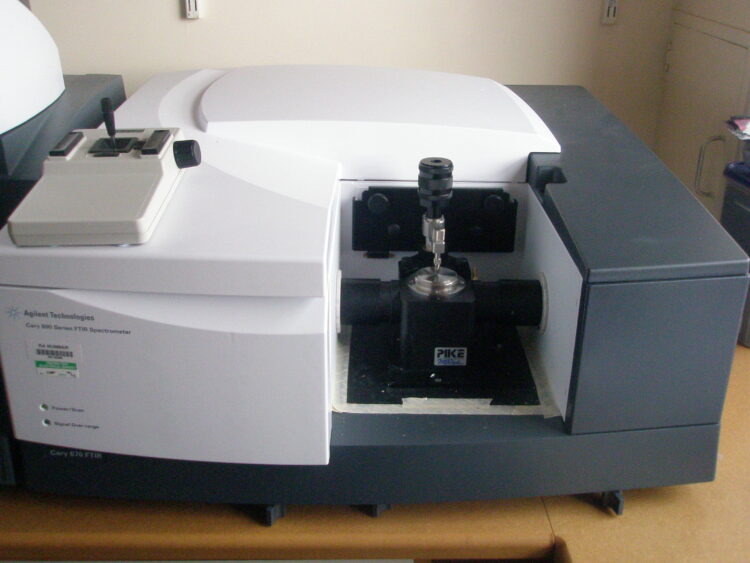
FTIR uses six major sampling techniques: transmission, attenuated total reflection or ATR, specular reflection, diffuse reflectance, photoacoustic, and reflection absorption.
- Attenuated Total Reflectance (ATR). The sample to be tested is brought into contact with an ATR crystal. ATR requires minimal or no preparation of the sample. Depending on the crystal material, it can be used to analyze various solids and liquids.
- Specular Reflectance. This technique tests bulk samples of glossy surfaces such as crystals, glasses, and monolithic polymers.
- Transmission. With this technique, a sample passes through complete infrared radiation to measure the extent of absorption.
- Diffuse Reflectance. Diffuse reflectance also requires little or no sample preparation. This technique is commonly used to analyze organic and inorganic samples such as soft powder and powder mixtures, tablets, and rigid polymers. In addition, it can be a viable alternative to traditional sampling methods for paint and varnish surfaces, tablets, and rigid polymers.
- Reflection Absorption. This technique is used for testing thin samples such as residues and paints.
- Photoacoustic. Photoacoustic is a complicated process but not impossible. This technique converts infrared absorption to heat inside the sample, which generates the photoacoustic signal.
FTIR Spectroscopy Has Many Uses
FTIR spectroscopy can measure samples as small as 10 microns. It is often also used for analyzing and measuring oxidation levels or degrees of cure in some polymers. In addition, it can be used to measure contamination levels or additives. FTIR spectroscopy can help pinpoint a sample’s molecular composition and structure.
Also, FTIR is utilized in identifying narcotics in various liquids, solids, and gases. However, this type of analysis is only possible in laboratories with the assistance of huge, bulky equipment. Generally, FTIR analysis is a materials testing and evaluation method that mostly identifies organic matter. Yes, FTIR is also utilized in crime scenes.

